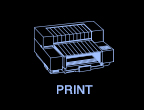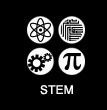


- MAKE YOUR OWN EXHIBIT
- WATCH A VIDEO
- READ A BLOG
- TACTILE & BRAILLE HTE
- AMERICAN SPACES
- PIN SOME IMAGES
- SHARE WITH A FRIEND

STEM
Here you can find the information we provide on the topics of the environment and also innovation for "Here. There. Everywhere." This section explores the content needs of American Spaces relevant to these two themes within our STEM (science, technology, engineering & math) project.
ENVIRONMENTAL PHENOMENA
We are affected by our local environment and climate on a daily basis. The HTE project seeks to provide information on the mechanisms behind these phenomena that can impact our everyday lives.
WEATHER: Whether we live in a place where it's dry, rainy, hot, cold, or a little bit of all of these, we are touched by the weather. Wind, lightning, tides, hurricanes, erosion, earthquakes, and tsunamis are often in the news, but where do they come from? What do scientists know about them and what are they still seeking to understand? How do these events impact such human concerns such as the seeding and ultimate success of crops, for example? HTE provides a unique introduction to these important topics.
OUR SKIES: No matter where we live on Earth, we all share the same sky. While some atmospheric marvels are tied to certain parts of our planet, like the aurora near the poles, others link us all around the globe. Sunsets appear in every country and on every continent, for example. An eruption from a single volcano can spread ash and dust around our entire planet. When our Sun, Moon, and Earth align in their orbits on occasion, the shadow cast across our planet during such eclipses knows no geographic or geopolitical boundaries.
INNOVATION
In the quest to be the best citizens of planet Earth possible, humans need to constantly seek new ways to minimize our impact while protecting and improving our lives. Often, this is done through innovations that begin in the fields of science, technology, engineering, and math and eventually reach our farmlands, forests, urban centers and everywhere in between.
Improvements in satellite technology and understanding of meteorology have led us to better forecasting systems for hurricanes and other destructive storms; better monitoring of the Earth has led to more warning and quicker communication for earthquakes and tsunamis; advances in wind turbines and solar panels have led to more efficient ways to capture renewal energy supplies; new methods in erosion prevention and soil maintenance have improved seeding techniques, which, in turn, have led to better crop yields around the world. These are just some of the examples of how our innovations can allow us to be better stewards for the planet we inhabit.








